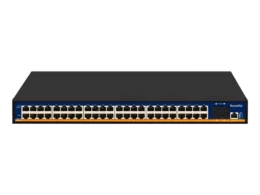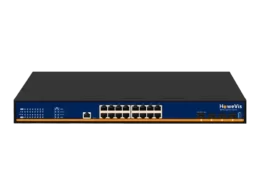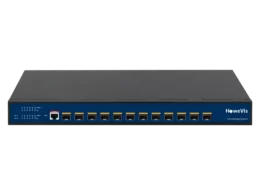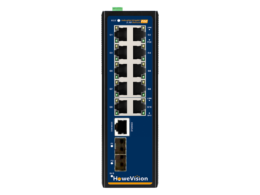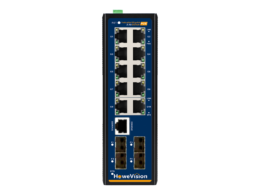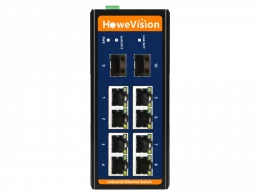Yes, you need a managed switch at home. You must employ the managed switch with a complex network of over eight computers. It will help you divide and control the traffic to improve network performance.
There are multiple types of networks. Some of them are below.
- Local Area Network(LAN)
- Personal Area Network(PAN)
- Wide Area Network(WAN)
You can use the managed switch in any of the above networks. But it all depends on the requirements and complexity of the network.
What is a managed switch?
What does the term “managed” show? Something you can supervise. Am I right? Just apply this concept to the managed switch. A switch you can manage, right? Let me define it better to clear all your confusion about it.
A managed switch is a network switch that offers flexibility to monitor and control your traffic. In simple words, you have access to traffic management and improve the performance of LAN. I suppose you understand what exactly I mean. If not, look at the working mechanism to understand it deeply.
How does it work?
There are three basic types of PoE(Power over Ethernet) switches mentioned below.
- Managed
- Unmanaged
- Web Smart or Hybrid
A managed switch is a PoE switch. That means it works based on the principles of IEEE 802.3 standards. To understand it in simple words, look at the following points.
- The host device sends the data packets over the IP address.
- The switch can configure the traffic, determine the route of data packets, and monitor the traffic.
- A managed switch can transfer over the given IP address to the destination device.
If you want a detailed comparison between managed and unmanaged PoE switches, look at the following: What is the Difference Between Managed and Unmanaged PoE Switches?
What are the features of a managed switch?
Managed switches provide the ultimate traffic flexibility required in a network. However, they also offer the following features.
IGMP(Internet Group Management Protocol) Snooping
- IGMP snooping enables control over the multicast traffic. You can reduce the unnecessary multicast traffic through IGMP snooping of managed switches.
Virtual Local Area Networks (VLAN)
- With control over the virtual local area network, you can allow the maximum bandwidth to specific devices. Moreover, this feature can help you isolate the traffic among multiple groups of LANs. Overall, this increases the performance of the network.
Quality of Service (QoS)
- This feature can help you control your bandwidth limit for specific devices and improve the quality of traffic. It determines which messages are important.
Simple Network Management Protocol (SNMP)
- SNMP can monitor port parameters and allow access to switch info. You can use this info in HMI(Human Machine Interface) and SCADA(Supervisory control and data acquisition).
Port Mirroring
- Port mirroring of the managed switch facilitates message monitoring. Moreover, it can highlight message troubleshooting and provide access to them.
Which layer switch is the managed switch?
Before heading to the managed switch, tell me the layer switch types in a network. There are two basic types of layer switches.
- Layer 2
- Layer 3
Layer 2 switch is a primary type of switch. It can offer plug-and-play features—no control over the traffic.
While a layer three switch is an advanced type, it can act as a router and enable intelligence to function in the network.
Can you guess which type of layer switch is a managed PoE switch? Isn’t it difficult to imagine? Surprisingly, the answer is both—layer two and layer three. Layer 2 managed and layer three managed switches are available nowadays. That means you can also get all the traffic management features in the layer two switch.
Do I need a managed switch at home?
The answer is not that simple. Instead, it depends on the network’s complexity. If you have a complex network at home comprising more than eight computers, the managed switch must be your priority. You need to divide the traffic and enable high-speed data connections to all your devices.
What will happen if you don’t use the managed switch in this case? That’s a good question. You might observe poor network performance and slow data speed. All this is due to poor or no traffic management in the network. So, I recommend a managed switch if your network is complex and comprises multiple computers.
What are the advantages of the managed switch in the network?
The managed switch comes with numerous advantages. I have listed some of those. Have a look!
A managed switch can minimize network downtime.
- Major advantage! Most enterprises lose millions of dollars just because of network downtime. Is there a solution? Yes, there is. Managed switches can decrease the rest of the network. They allow failover links to avoid this problem and minimize network downtime. Protocols in managed switches, such as Alpha Ring Topology, enable failover links and reduce downtime, especially broken ones. Moreover, Rapid Spanning Tree Protocol (RSTP) can positively affect this aspect.
It can improve the performance of the network.
- Managed switches can improve network performance in multiple ways. You have access to your traffic and can isolate it in different groups. They are reducing traffic and high performance. It can act as a router in case of a layer 3 managed switch and route the data packets for ultimate network performance. The IGMP snooping feature of a managed Ethernet switch can optimize traffic and help you control it better.
A managed switch enhances your network security.
- Cyberattacks are a significant problem in enterprises. A managed switch can reduce this problem quite efficiently. It only allows authorized devices and provides a data connection with several security protocols, such as HTTPS, SSH, and SSL. A managed switch can limit access to only permitted devices and uses RADIUS or other security protocols. Thus, you can access the secure data connection and keep hackers away.
It enables Virtual Local Area Network(VLAN) distribution.
- Virtual Local Area Networks (VLANs) are small networks in the local area, such as one or two buildings that are close to each other and have access. A managed switch can permit the VLAN distribution and provide the data connection.
It offers complete flexibility for your network control.
- Do you want to manage your traffic? No problem. A Managed Ethernet switch can help you effectively monitor traffic. With control over the traffic, it can allocate it to a specific group of computers and enhance the network’s performance. With complete flexibility to control your network traffic, you can employ this access in your distribution or core layer of the network.

